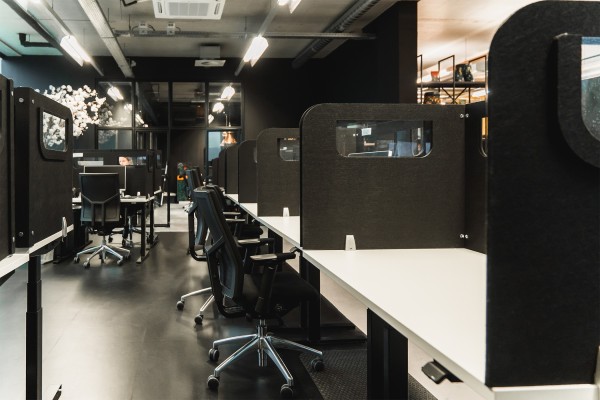The results of a quick internet search allow us to choose one of countless acoustic products. But how to determine which product will actually solve our noise issues?
First we will have to determine the nature of the noise issue. Are we dealing with a space that is considered ‘loud’, or is the issue caused by impaired speech intelligibility in a large room? Or is this a closed concentration situation, and/or a meeting room in which sounds both from within and from without can still be heard?
When choosing products, we often (too often?) add random elements to our rooms, thinking that they will provide a solution. Our choice is often determined by the look, colour and price tag (obviously) of the product.
In many cases, noise nuisance issues can be attributed to the design of the room. Open-plan offices housing many or too many employees are very likely to generate noise nuisance.
This contains specific guidelines, e.g. do not let more than four to eight employees share a room. It also expresses the acoustic quality of a room in terms of reverberation time, and lists various insulation values for partitions between various types of rooms.
Tip: we would like to refer you to a so-called TED talk by Julian Treasure, in which he explains what noise nuisance is and calls on people to pay more attention to noise levels by adjusting their viewpoints and particularly their designs: ‘
we must design more with our ears, rather than with our eyes'.

